Welcome to town Rebecca (Kornblum)

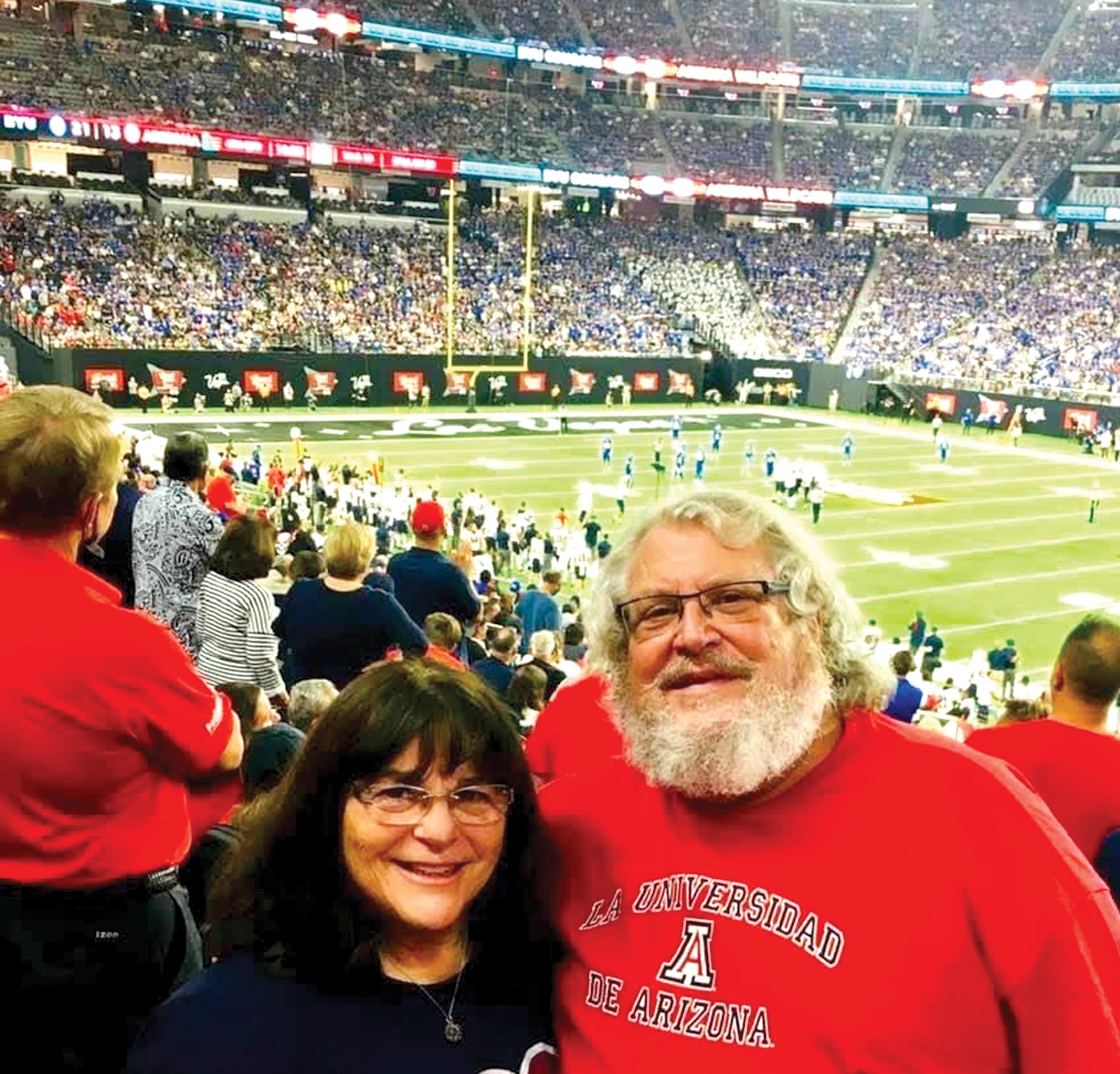
Blank can’t forget a Polish encounter


Oppenheimer, the physicist
Father of the atomic bomb
Lebanese street food
Meat-stuffed pitas for end-of-summer BBQ
Keeping Jewish | August 2023 | BS”D WRAPPING UP THE YEAR: OBSERVANCES, CHECKING YOUR MEZUZAHS AND A QUIZ Tradition, Inspiration and Celebration · August 2023 - Elul 5783 · Published by Chabad Tucson Jewish in
friend,
shoplifter
of repentance
My
the
A tale
and redemption
The Jewish outreach and education network of Southern Arizona
2443 E 4th Street, Tucson, AZ 85719
EXECUTIVE DIRECTOR
Rabbi Yossie Shemtov
REBBETZIN
Chanie Shemtov
OUTREACH DIRECTOR
Rabbi Yehuda Ceitlin
PROGRAM DIRECTOR
Feigie Ceitlin
Affiliates:
Congregation Young Israel, Chabad at the University of Arizona, Chabad on River, Chabad of Oro Valley, Chabad of Sierra Vista, Chabad of Vail and Lamplighter Chabad Day School of Tucson

7 ways repentance is like dry cleaning
By Rabbi Yehuda Ceitlin
2. Go the Extra Mile
For everyday clothing, you can throw it in the washer with detergent and a short while later — it’s done. But that won’t cut it when it comes to “Dry Clean Only” garments, which require professional treatment that takes longer. You do it because those clothes deserve the extra effort.
Our soul - the one granted to us by G-dalso requires extra gentle care. The focus of teshuva isn’t only about making up for misdeeds but also coming closer to G-d. Chassidic philosophy describes the latter as the “Higher Teshuva” - the extra mile.
3. Pre-Inspection
immediately placed in a drying machine that removes any remaining moisture left. Wet clothing left to linger may develop a musty smell or be otherwise damaged, so it’s important to dry the clothing promptly.
Tears of regret are an important tool — but as soon as they have served their purpose, we cannot dwell on our sadness and fall into despair. Melancholy is the enemy of positive action, the book of Tanya teaches. Instead, we dry our tears and channel our regret into a feeling that inspires us to improve ourselves.
6. Plan for the Future
EDITOR
Rabbi Yehuda Ceitlin
COPY EDITOR
Suzanne Cummins
CONTRIBUTING WRITERS
Yehuda Altein, Mala Blomquist, Feigie Ceitlin, Sruly Meyer, Elana Mizrahi, Menachem Posner, Mordechai Schmutter, Benjamin Weiss
PHOTOS
Jacqueline Soffer Studio
SPECIAL THANKS Chabad.org
EDITORIAL INQUIRIES OR ADVERTISING
Phone: 520-881-7956
Email: info@ChabadTucson.com
Keeping Jewish is published in print periodically by Chabad Tucson and is distributed free in Tucson and around Southern Arizona
Chabad Tucson does not endorse the people, establishments, products or services reported about or advertised in Keeping Jewish unless specifically noted. The acceptance of advertising in Keeping Jewish does not constitute a recommendation, approval, or other representation of the quality of products or services, or the credibility of any claims made by advertisers, including, but not limited to, the kashrus of advertised food products. The use of any products or services advertised in Keeping Jewish is solely at the user’s risk and Chabad Tucson accepts no responsibility or liability in connection therewith.
Note: “G-d” and “L-rd” are written with a hyphen instead of an “o .”This is one way we accord reverence to the sacred divine name. This also reminds us that, even as we seek G-d, He transcends any human effort to describe His reality.
The central theme of Elul, the final month of the Jewish calendar, is teshuva — repentance (or, more accurately, returning to G-d). We strive to better ourselves as we prepare for the days of judgment and remembrance ahead.
This process culminates with Yom Kippur, the Jewish day of atonement. “For on this day, He shall effect atonement for you to cleanse you. Before the Lord, you shall be cleansed from all your sins,” the Torah says (Leviticus 16:30).
Perceiving the work of teshuva as a form of dry cleaning can help visualize and actualize the cleansing of our souls. Here are seven things that the two have in common.

1. Notice the Stain
The first step in giving your garment a cleaning is recognizing that it is in need of one. However carefully we wear our clothes, there will be stains that will need to be addressed.
The first step in doing teshuva — returning to G-d — is to recognize that you have strayed, that your actions have stained your soul. Once you notice the blemish that sin has created, you can clean it.
When the cleaners take in clothes, they perform a pre-inspection, checking for stains, fabric type, and special handling requirements. Stains are then pre-treated using solvents or spotting agents to break down and remove the stains.
The month of Elul allows us to do just that. The stretch of 29 days allows us to dive into introspection and review those negative traits that we have stubbornly held onto throughout the year. We can then focus on each of them - whether they are wrongs we have done to others or to G-d.
4. The agitating wash
The actual cleaning is done in dry cleaning machines that do not use water but a robust solvent added to the drum and a small amount of detergent. The drum rotates, and the clothes are tumbled gently in the mixture, helping to dislodge dirt and stains from the fabric.
With the prerequisites out of the way, the hard work of teshuva begins: feeling and expressing regret for the way that our wrongdoing has impacted ourselves, others and the universe. This agitating process and our salty tears lead to rinsing away the stains of sin.
5. Don’t Linger
Once cleaned, the garments are
Once the cleaning process is complete, the clothing is pressed, folded, boxed, or hung on hangers and placed in a protective bag. As you take them back home, you try to avoid getting them stained again with that greasy stain that took so much effort to remove.
Once our souls have been cleaned through teshuva, the next step is resolving to be better in the future. We try to keep away from the habits and situations that have led us to go astray. We try to keep our souls as pristine as possible.
7.
Make it a Habit
Despite our best efforts, a clean garment only remains that way for a while. As we go about our day, spots and stains tend to come up, and regular cleaning can ensure the clothing is ready for use whenever needed.
Similarly, the Chassidic custom is to perform a “cheshbon hanefesh” (an accounting of the soul) every night before going to sleep. This practice is based on the instruction of the sage Rabbi Eliezer, “Repent one day before your death” (Avot 2:10). Because we don’t know the day of our eventual death, the Talmud (Shabbat 153a) concludes that we should do so daily and always be prepared to give a reckoning of our actions to our Creator.
- Rabbi Yehuda Ceitlin is the Outreach Director of Chabad Tucson

| August 2023 | Keeping Jewish
2
OPINION
Kosher sections expand in Arizona
Whole Foods, Fry’s Food Stores, and Canyon Glatt see a growing need
By Mala Blomquist and Benjamin Weiss
Supermarket chain Whole Foods Market has announced the expansion of its Kosher Foods section across all stores, including the branches in Tucson, Arizona. With a focus on elevating the consumer experience, the updated selection of Kosher Certified products aims to meet the growing demand for diverse, high-quality options.
Recognizing the increasing trend among consumers seeking Kosher Certification as a product attribute, Whole Foods and kosher food distributor Kayco have curated a range of products catering to various preferences.
Alongside well-established brands like
Gefen, Kedem, and Manischewitz, new additions such as Heaven & Earth and Haddar bring fresh flavors and choices to the assortment. The new collection includes Haddar’s Plain and Seasoned Sesame Tahini and Heaven & Earth’s Almond Butter Bites in Coconut Date and Coconut Hazelnut.
Some of the over 50 products on shelves include Manischewitz Matzo Ball Mix; Chicken Broths; Vegetable Broths; Egg Noodles; Potato Pancake Mix and Matzo Meal and Kedem Grape Juice; Cooking Wines; Whole Wheat Tea Biscuits.
Moreover, Kayco now provides Whole Foods with a comprehensive selection of Kosher and gluten-free options, including Gluten Free Matzo, Broth, Candy, Cookies, Noodles, Cooking Wines, and Condiments. “This expansion further solidifies Whole Foods as a one-stop destination for those seeking both Kosher and gluten-free products,” the companies said in a statement.
Whole Foods has 3 locations in the Tucson area: 3360 E Speedway Blvd (east of Country Club), 5555 E River Rd (east of Craycroft Rd), and 7133 N Oracle Rd (south of Ina Road).
Another grocery chain looking to expand its kosher offering is Fry’s Food Stores, which has “Kosher Experience” sections in three stores in Phoenix and Scottsdale. The largest Kosher Experience is inside Fry’s Marketplace at 4707 E. Shea Blvd in Phoenix. The area contains several split aisles and cases with frozen foods marked with “kosher” in blue lettering.
Daniella Lerma, Fry’s multicultural specialist, says those sections were inspired by her visits to the Ralphs grocery store in La Jolla, housing one of the largest kosher sections in Kroger’s (Fry’s and Ralph’s parent company) lineup.

“When you walk in, there’s a kosher bakery, kosher deli, and kosher ‘grab and go’ meals. Half of the store is dedicated to kosher products,” she said. “That was my inspiration. I thought, ‘How do we bring that back to Arizona?’” Lerma added, “I grew up in a Hispanic household, so learning the kosher side of the business has been very fun, and I love it.”
She said that the week leading up to Passover last year, people kept mentioning that they come from all over the state to this one store. “It’s amazing,” said Lerma. “I tried to get feedback to see what we can do in their areas next year, so they don’t have to travel to Scottsdale to get products.”
Lerma hopes to expand these “Kosher Experience” sections to stores in Chandler and Tucson in the near future. She is planning meetings with rabbis to help determine the best items for the community and what is lacking.
Similar to Whole Foods, Lerma said that Fry’s is forming relationships with Kayco and kosher food vendors like Kedem Food Products/Royal Wine Corporation, Tuscanini, and Heaven & Earth.
Another exciting development in the kosher food scene is Canyon Glatt Kosher, formerly known as 101 Kosher Butcher in Phoenix, which recently began delivering orders on a weekly basis to Tucson. Nancy DuBois is one glad customer. “Thank you, Canyon Glatt Kosher, for providing this fresh, high-quality meat and chicken to us in Tucson,” she wrote on the Kosher in Tucson group on Facebook. “Chicken cutlets, brisket, and flanken, all very reasonably priced and delivered right to our door.” To order, call 602-899-9233 or email: 101kosherbutcher@gmail.com
Keeping Jewish | August 2023 | NEWS
3
The Kosher Experience section at Fry’s on Shea Blvd in Phoenix
Jewish in Bruce and Alayne Greenberg’s 50-year marriage and Jewish commitment
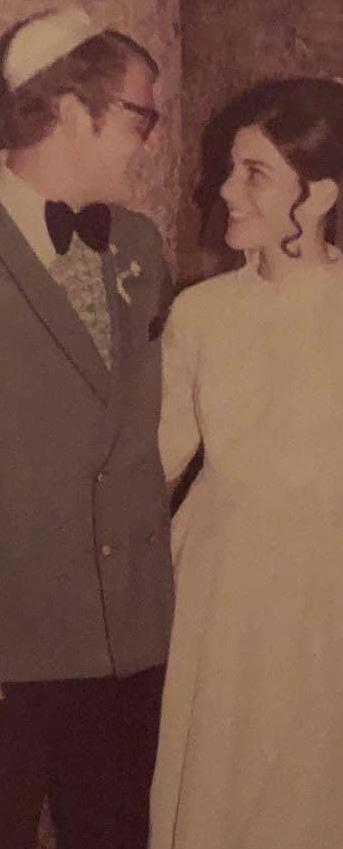 By Sruly Meyer
By Sruly Meyer
The courtship of Bruce and Alayne Greenberg began in their second semester at the University of Arizona. He was a Conservative Jew, while she was raised in a Reform Jewish home. They met at a Shabbat dinner hosted at the Hillel student center. They married shortly after graduating and committed to living a Jewish life in Tucson.
As they celebrated their 50th wedding anniversary this past month, they reflected on five decades of marriage and raising a Jewish family in the Old Pueblo. To do so, they had to adapt to changes in the ever-transitioning Jewish community that Southern Arizona has evolved into.


When they first married in 1973, there were three active synagogues in Tucson. The oldest was the Stone Avenue Temple (Emanuel) which was Reform. Congregation Anshei Israel, founded in 1930, was Conservative. The ‘youngest’ was Congregation Young Israel, founded in 1948 as the first Orthodox synagogue in Arizona. Over time, the Greenbergs became active in all three of them.
But Tucson did not leave things at that. There have been so many spinoff congregations it is hard to track them. Some have closed, and new ones have formed. Some have physical buildings, while others share facilities. Most of them have struggled in one way or another.
Over the years, the Greenbergs have seen rabbis come and go, congregations grow and fall, and people associate and disassociate over their time here. It has been challenging to have continuity here, they admit. “There was always a strong Jewish community here, and back in the day, there was even a kosher baker and butcher, but over time that ended,” Alayne says.
Even with their sights sets on their careers - Alayne in special education and Bruce in real estate appraisals, the couple made it a point to be involved in all things Jewish. With the birth of their children Aaron, Tzaddik, Benjamin, Issac, and Anna, they enrolled them in the Tucson Hebrew Academy (THA), Tucson High School for Jewish Studies (“Hebrew High”), and other available educational programs.
Tucson, at the time, experienced growth and development. The city’s population increased, becoming a hub for arts, culture, and outdoor activities due to its proximity to natural attractions like the Sonoran Desert and nearby mountains. The Greenbergs watched the city expand, and dirt roads get paved and become busy thoroughfares.
“To their credit, the Greenbergs have taken advantage of every possible Jewish program and activity,” says Rabbi Yossie Shemtov, Executive Director of Chabad Tucson, who oversees the six Chabad centers across Southern Arizona. “They made it a priority to give their children a strong Jewish identity utilizing whatever was available.”
| August 2023 | Keeping Jewish 4
PROFILE
Bruce
One such function was Chabad’s Model Matzah Bakery, organized by Rabbi Shemtov and his wife Chanie Shemtov, which the Greenbergs attended in 1985. The interactive program offered children a hands-on experience to learn about the story of Passover, the importance of matzah, and the process of making matzah in a fun and engaging way.
“We were introduced to the Greenbergs by their uncle, who owned a dress shop called New York, New York,” recalls Rabbi Shemtov. “With four boys and a girl, they were a built-in crowd at every Jewish event. They soaked up every opportunity and were also ‘all in’ on helping make it even more wonderful.”

Appreciating Chabad’s engaging approach, the Greenbergs became regulars at Chabad events and classes, all while remaining active members of other congregations.

They brought their children to holiday celebrations and Chabad’s Gan Izzy Day Camp in the summer. In recent years, Aylane has been a regular at the annual Mega Challah Bake of Tucson, joined by her grandchildren.
“The Greenbergs have created a strong Jewish presence for their family,” says Rabbi Shemtov. “Their three married sons married Jewish women and live Jewish lives. Their grandchildren are learning and growing as young Jews. This is not a small achievement. In fact, I think it’s a major one.”
Though the shifting dynamics of the community presented challenges to a Jewish life with continuity in Tucson, the most significant change for the Greenbergs came from within their family.

In 2013, they lost their beloved daughter,
Anna, to a rare form of childhood cancer. In some families, this level of tragedy could end a marriage, but the Greenbergs have stayed together through the pain and have reaffirmed their spirituality and sense of fellowship in the wake of it.
The family has been commemorating Anna’s memory through acts of charity, such as two of their grandchildren growing their hair long to create wigs for children with cancer. “Anna didn’t want to stop fighting for one moment,” says Alayne. “Even days before her passing, she was working to raise awareness and funds toward cancer research.”
They also find comfort in other ways. Bruce recounts a story from Anna’s final days. “I asked her how will I know you are ok. She said, ‘When you see butterflies, know that’s me.’” When they encounter butterflies today, “It’s a sign from Anna, watching over
us with a smile,” Alayne says in a soothing voice.
“Anna was a very special girl,” says Rabbi Shemtov. “She had a pure neshama (soul), and she went through the hardest battle a person could have - with a smile on her face. She was a source of inspiration then and now as well. You can see her influence felt in the actions and commitment the family has to the Jewish community.”
The Greenbergs see parallels between the success of a lasting marriage, and Jewish committed family, and the work involved in building a community. “50 years of marriage is the result of two people who are committed to each other, a commitment to growth,” says Bruce. “As you get older and continue to mature, you realize what’s important.”
Keeping Jewish | August 2023 | 5
Bruce and Alayne Greenberg with some of their children and grandchildren in 2021
MEZUZAH FACTS EVERY JEW SHOULD KNOW
1. The word Mezuzah literally means “doorpost”
In Biblical Hebrew, the word mezuzah means doorpost. The verse instructing us to write a mezuzah reads, “You shall write [these words] upon the mezuzot— doorposts—of your house and upon your gates.” Talmudic literature applied the term to the scroll affixed to the doorpost, which is how we still refer to it.
2. It’s handwritten on parchment
A mezuzah must be written on the parchment of a kosher animal. The parchment must have been prepared explicitly for use as a sacred object. The words must be handwritten by an expert scribe well-versed in the intricacies of the script and its laws. Even the ink and quill are custom-made to meet the necessary requirements.
3. It contains the Shema
Each mezuzah scroll contains the first two
By Yehuda Altein
portions of the Shema, beginning with the verse, “Hear o Israel, the L-rd is our G-d, the L-rd is One.” Both of these selections contain G‑d’s instruction to affix the mezuzah: “You shall write [these words] upon the doorposts of your house and upon your gates.”
4. It has Sha-dai written on the reverse
On the reverse side of the scroll, the scribe writes one of G-d’s names: Sha-dai. The three letters of this name form an acronym for the Hebrew words Shomer daltot Yisrael, “Guardian of the doorways of Israel.” If you’ve noticed that mezuzah cases are often decorated with the letter shin, it’s because the name of G-d begins with shin.
5. It has a Secret Code
Three additional words are written on the reverse side of the scroll:
This seemingly incomprehensible sentence comprises the three names of G-d that

appear in the verse of Shema—Hashem Elokeinu Hashem—by replacing each letter with the following letter of the Hebrew alphabet (e.g., yud is replaced with chaf, hei is replaced with vav, and so on). These three words are written on the reverse side of the parchment, in the very same spot where the corresponding names of G-d are written inside the scroll. This type of spelling, nicknamed “mezuzah script,” was often used by Jews in Soviet Russia to write letters containing “incriminating” information.
6. The case can be made out of anything
A mezuzah case is used to protect the parchment but is not halachically required. As such, the case may be made out of just about anything, although more common materials include metal, wood, ceramic, or plastic.

Styles and designs have evolved, and you can now find everything ranging from
simple plastic tubes to decorative cases made of exotic materials featuring popular Jewish themes. While beautifying a mitzvah is a positive thing, investing in the quality of the scroll is the priority.
7. A Mezuzah can cost upwards of $40 Kosher mezuzah scrolls can cost anywhere from $40 to $175 each. The difference in price depends on size, quality, and type of script. Since even a small error can render a mezuzah unfit, it is vital that it is purchased from a reputable scribe or retailer. Spending more money on a higherquality scroll fashioned with greater care and precision may be worthwhile.
8. The Mezuzah is placed on the right side
The mezuzah is affixed to the right hand side of the doorpost as you enter the room. For the front door, the right as you enter is always considered the right side. Inside the house, however, the right side is determined by which way the door opens.
| August 2023 | Keeping Jewish
JUDAISM 101
6
15
Photo by Cottonbro/Pexels
Whichever room the door opens into is considered the primary room, and the mezuzah is placed on the side that is on the right when entering that room.
The proper place for the mezuzah is at the bottom of the top third of the doorway. In other words, measure the height of the doorway and divide by three; then align the bottom of the mezuzah with the point two-thirds of the way up the doorpost.
If you are unsure, it is advisable to have a rabbi visit your home to determine the correct location for the mezuzah.
9. It is generally hung slanted
In Ashkenazic tradition, the mezuzah is placed at a slight angle, with the top of the mezuzah pointing toward the inside of the room and the bottom pointing toward the outside. In Sephardic communities, however, the mezuzah is affixed vertically.
10. There’s a blessing for it
Before affixing a mezuzah (or, if many are being placed, before affixing the first one), a special blessing is recited:
Bah-rookh ah-tah ah-doh-noi eh-loh-haynoo meh-lekh hah-oh-lahm ah-sher ki-dehshah-noo beh-mitz-voh-tahv veh-tzee-vahnoo lik-boh-ah meh-zoo-zah.
Blessed are You, L-rd our G-d, King of the Universe, Who has made us holy with His commandments and commanded us to affix a mezuzah.
11. Most but not all rooms need a mezuzah
To properly fulfill the mitzvah, each room should have its own mezuzah, with some exceptions. Rooms smaller than 6.3 feet by 6.3 feet (e.g., a closet), bathrooms, or rooms lacking a doorway with two doorposts and a lintel do not need a mezuzah.


12. It needs to be checked twice every seven years
Mezuzahs should be checked by a certified scribe twice every seven years to see if they have been affected by adverse weather conditions, or by folding (which can cause cracks in the letters), or if any other defects have occurred. Some check their mezuzot every year, during the Hebrew month of Elul.
13. People kiss the Mezuzah
The tradition in many Jewish homes is to place one’s hand on the mezuzah when passing through the doorway, and some then kiss the hand that touched it. Some have the additional practice of raising their young children to kiss the mezuzah before going to bed, instilling an affection for G-d and His commandments within them.
14. Its laws are in Talmud Menachot
Surprisingly, there is no tractate in the Talmud devoted to the laws of the mezuzah. Instead, the laws of mezuzah— along with the laws of tzitzit and tefillin— can be found in Tractate Menachot, the
section that discusses the flour offerings brought in the Holy Temple. Why there?
Tzitzit contain two independent units (the white strings and the blue string of techelet), tefillin comprise two independent parts (the head tefillin and the hand tefillin), mezuzah contains two selections from Scripture, and the meal offering also has independent elements of wine, oil, and flour.
15. It bestows divine protection
While all mitzvot are performed to fulfill G‑d’s command, affixing a mezuzah to the doorway of your house has the added benefit of initiating Divine protection on the home and its inhabitants. Per the Talmud: “A king of flesh and blood sits inside [his palace], and his servants guard him from the outside. With G-d, by contrast, His servants sit inside [their homes], and He guards them from the outside.”

Displaying a mezuzah on your home serves as a declaration and reminder of our faith, as well as a symbol of G-d’s watchful care.
•
On Sunday, August 27, Chabad Tucson will be hosting a visit by Rabbi Dovid Nissan Bressman, a scribe (sofer stam) from Los Angeles, California and author of “Mezuzah: Divine Protection & Blessing.” Bring your mezuzahs (and Tefillin) to be checked by him between 7 AM and 9 PM at The Shul 2443 E 4th Street. He will also have new mezuzahs available for purchase. For more info, call 520 881 7956 ext. 12 or email info@ChabadTucson.com
Keeping Jewish | August 2023 |
7
The actual Mezuzah - a parchment with the handwritten Shema * Photo: Mezuzah Scrolls
Welcome to town: Rebecca (Kornblum) Blank
By Benjamin Weiss
A little about myself: I was born in New York City, moved to New Hempstead (Monsey, NY) when I was 5 and lived there till I got married. I am currently a student at Yeshiva University’s Wurzweiler School of Social Work, where I am studying for my master’s in Social Work.
Moving to Tucson: I moved to Tucson 9 months ago. At first, it was a hard adjustment, but having a good group of friends and a supportive community definitely helped me feel more comfortable here.
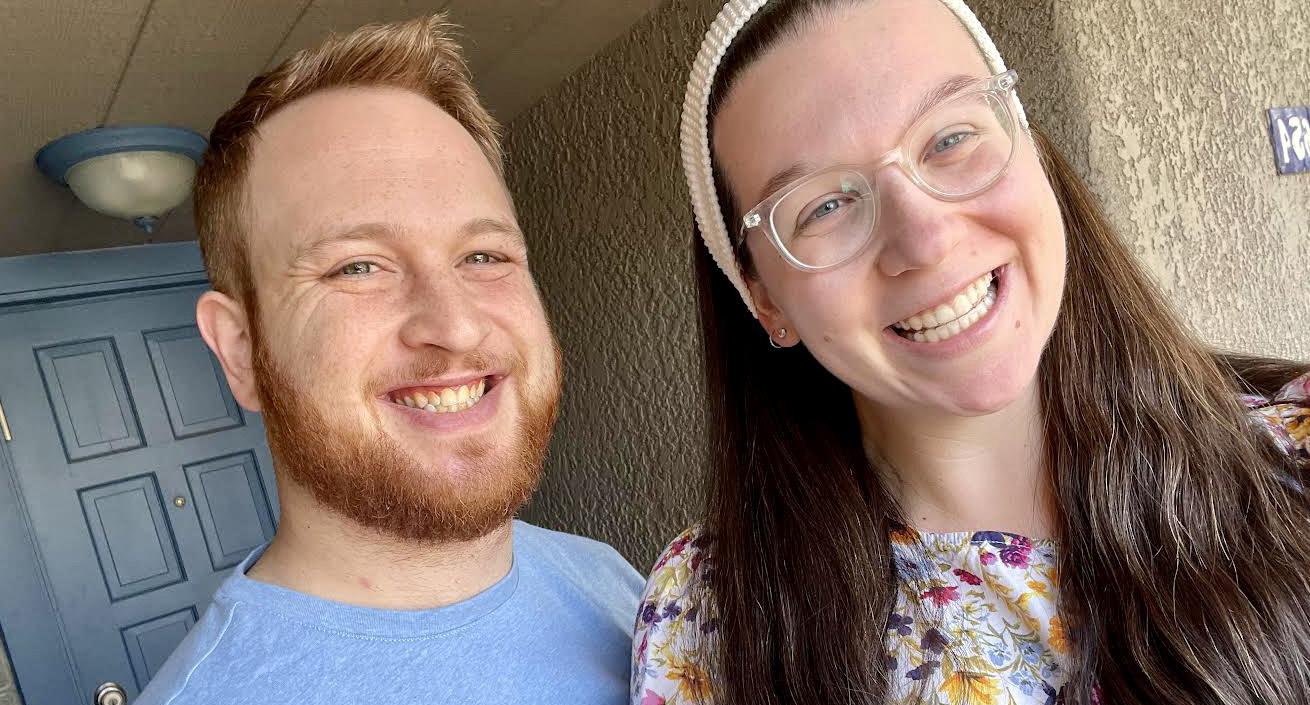
Favorite Mitzvah/holiday: My favorite holiday is Sukkot.
Cherished Jewish memory: I went to Poland with my seminary and a few of our teachers during my year in Israel. On our last day, as we were getting on a bus
to the airport, an older woman approached us with a huge smile and started speaking enthusiastically. We could not understand her since she spoke Polish, but something about her enthralled us. We needed to leave, so we exchanged smiles and hugs with her and got on the bus. Our tour guide then told us what she was saying: she had been involved in helping and saving Jews during the Holocaust. As the bus pulled away, we looked back and waved to her and wished we had more time to hear her story. That was the first time over the whole trip to Poland that I felt a sense of hope, a glimmer of positivity in such shadows of darkness.
Jewish app on phone: The Meaningful People podcast on Spotify.
Go-to Yiddish or Hebrew word: Baruch Hashem (Hebrew for “Blessed be G‑d.”)
Historical Jewish figure: Moshe.
Define Chabad: Openness and accepting environment.
Define Tzedakah: Giving to those who are in need of support when they are not able to provide for themselves.
Define Happiness: Feeling fulfilled in what you’re doing in life and surrounding yourself with positive influences.
Hobbies: Writing, listening to music, and spending time with friends and family.
Comfort food: Macaroni and cheese.
Kvetch:
That we don’t have an Eruv here. (An Eruv is a rabbinic installed boundary that allows Jews to carry in public areas on Shabbat).
Kvell / nachas: I succeeded in my first-year clinical internship.
Your claim to fame:
My uncle is Elan Kornblum, otherwise known as the Great Kosher Restaurant Guy. He runs a huge foodie page on Facebook called Great Kosher Restaurants Foodies.
Something you’re looking forward to… I am going to New York at the beginning of August and am very excited to spend time with my family and friends there.
| August 2023 | Keeping Jewish 8
Rebecca (Kornblum) Blank and her husband Adam
LOCAL
Middle Eastern Arayes
By Feigie Ceitlin
Arayes are a delicious Middle Eastern specialty that will transport your taste buds to the vibrant streets of the region. This delightful grilled dish features pita bread stuffed with a flavorful mixture of ground meat, herbs, and spices.

Whether enjoyed as an appetizer or a main course, arayes are sure to impress your guests with their irresistible combination of crispy exterior and juicy, aromatic filling. So, fire up the grill and get ready to savor the flavors of the Middle East with this mouthwatering arayes recipe!
INGREDIENTS:
Pita bread
Meat mixture:
1 lb ground beef
2 cloves fresh garlic, minced
6 sprigs of fresh parsley, chopped finely
2 scallions, chopped finely
½ tablespoon maple syrup
2 tsp olive oil
1 tsp salt
1 tsp pepper
½ tsp cumin
½ tsp turmeric
½ tsp paprika
DIRECTIONS:
1. Preheat your grill to medium-high heat. If using an oven, preheat at 400°F (200°C) for about 10-15 minutes.
2. In a large mixing bowl, combine the ground meat and all ingredients. Mix well until all the ingredients are evenly incorporated.
3. Cut the pitas in half-moon shapes or into quarters. Gently open each pita to create a pocket.
4. Take a generous spoonful of the meat mixture and stuff it into each pita pocket.
Press the edges of the pita to seal the filling inside.
5. Lightly coat each pita with oil.
6. Place the stuffed pitas onto the preheated grill for about 4-5 minutes on each side or until the bread becomes crispy and grill marks appear. If using an oven, cook for about 10-15 minutes or until they are golden and crispy.
7. Once cooked, let them cool slightly before serving.
Arayes can be served as is, but they are often accompanied by a side of tahini sauce, non-dairy dill sauce, or garlic sauce for dipping. Serve the arayes warm and enjoy them as a delicious appetizer or as part of a main course. They pair perfectly with a fresh salad or a side of grilled vegetables.
The blessing: Hamotzi
Fill a large cup with water and pour it three times over your right hand, then three times over the left, and recite:
Baruch atah A-donay, Elo-heinu Melech
Ha’Olam shehakol nihiyah bed’varo. Blessed are You, L-rd our G-d, King of the universe, by Whose word all things came to be.
Then dry your hands thoroughly and recite the blessing on bread:
Baruch atah A-donay, Elo-heinu Melech
Ha’Olam Hamotzi lechem min haaretz. Blessed are You, L-rd our G Universe, Who brings forth bread from the earth.
B’Tayavon!
— Rebbetzin Feigie Ceitlin is the program director of Chabad Tucson and head of school of Lamplighter Chabad Day School.


KOSHER
*
Photo: heninthekitchen.com
My friend, the shoplifter
A tale of hope, repentance, and redemption
By Elana Mizrahi
The news was heartbreaking. It wasn’t the first time I heard it, the second or the third, and yet it didn’t matter. Daniela (not her real name) was an old friend, a very old friend, and it pained me to hear that she was once again in trouble.
I remember Daniela from our youth and recall her brilliance, wit, and potential. I also remember the challenges and the traumas that she lived with. Daniela did not have an easy life.
Her parents emailed me, asking me if I could do something. Maybe reach out to
her? Write her a letter? I could try. I would try, but I, too, felt helpless and unsure of what to say or do.
“What was it this time?” I asked. “Why was she sent back into jail?”

Her father told me she got caught stealing a $10 item from a store. “How could she be so stupid?” he said. “She’ll never learn, never change.”
I know that his remark came from a place of pain, though it shocked me nonetheless. A person doesn’t get into trouble, time
and time again, because they are stupid. Daniela was a person in pain. Stealing a $10 item when you had a long record was, in a way, like saying, “Life is more painful being free than as a prisoner in jail.”
It’s been so many years that I think Daniela herself feels this is simply her fate—that this is who she is and that she’ll never change.
Many of us have that same belief to some extent. We think that it’s impossible to break free—from our bad habits or from the pain, trauma and mistakes of our lives.
But it’s not true. There is a way out. It just might not be through the front door.
Let me explain.
A parable from our sages tells that a band of robbers was caught and thrown into the king’s dungeon. The prisoners dug a tunnel and fled. One of them, however, chose to stay behind. The guard arrived, noticed the tunnel, and then saw the sole prisoner still sitting in the cell. He yelled at him: “Fool! You had a chance to run, and you didn’t?”
Our sages teach us that sin traps us,
| August 2023 | Keeping Jewish
ELUL 101
10
Photo by Denis Oliveira/Unsplash
just band the tunnel to noticed the still “Fool! didn’t?”
but there is an escape tunnel. When you are in such a low place—a place where it seems impossible to be let out, a place where it seems like change is insurmountable—you must always know that G‑d created a means of escape.
The escape tunnel is teshuvah. What is teshuvah? It’s commonly translated as repentance but literally means “to return.” Return to what? Return to G‑d, return to your G‑dliness and your goodness. Return to the potential of who you really are and the greatness of who you can become.
Daniela, I want to tell my friend, “You are in jail, but there is an escape. RUN!”
This is a process. It’s hard, and the tools that you need might not be what you expect. You might have to dig and dig deep within yourself. But the true gift from G d is that you can “return” to who you can be. But first, you must believe that it’s possible to get out.
The month of Elul is a time of preparation for the new year, but it is much more than that.
There is a custom to recite Psalm 27 every day during this month. This psalm teaches us that even when everything looks helpless, there is always a path to G‑d. “For my father and my mother have forsaken me, but the L‑rd gathers me in ... .” No matter what anyone says, thinks, or believes, no matter what we think or say about ourselves, we still have this gift of return every moment that we are alive.
During the month of Elul, G‑d beckons us to find our escape tunnel and realize that it’s in front of us.
“Daniela,” I pray. “Believe! Believe in yourself. And believe that you can be better.”
— Originally from northern California and a Stanford University graduate, Elana Mizrahi now lives in Jerusalem with her husband and children. She is a women’s health & spiritual wellness coach, doula, massage therapist, and author of Dancing Through Life.
Elul observances in a nutshell
As the last month of the Jewish year, Elul is traditionally a time of introspection and stocktaking—a time to review one’s deeds and spiritual progress over the past year, and prepare for the upcoming “Days of Awe” of Rosh Hashanah and Yom Kippur.
As the month of divine mercy and forgiveness, Elul is a most opportune time for teshuvah (“return” to G‑d), prayer, charity, and increased ahavat Yisrael (love for a fellow Jew) in the quest for self improvement and coming closer to G‑d.
Chassidic master, Rabbi Schneur Zalman of Liadi, likens the month of Elul to a time when “the king is in the field” and, in contrast to when he is in the royal palace, “everyone who so desires is permitted to meet him, and he receives them all with a cheerful countenance, showing a smiling
face to them all.”
The following are some of the basic customs and practices for the month of Elul:
Each day of the month of Elul (except for Shabbat and the last day of Elul), we sound the shofar (ram’s horn) as a call to repentance.

When writing a letter or meeting one another, we bless one another by including the greeting Ketiva vachatima tova— which roughly translates as “May you be inscribed and sealed for a good year.”
Chapter 27 of the Book of Psalms (Tehillim) is added to the daily prayers in the morning and afternoon.
The Baal Shem Tov instituted the custom of reciting three additional chapters of Psalms each day, from the first of Elul until Yom Kippur. (On Yom Kippur, the remaining 36 chapters are recited, thereby completing the entire book of Psalms.)
Elul is a good time to have one’s tefillin and mezuzot checked by an accredited scribe (a sofer), to ensure that they are in good condition and fit for use. (See pages 6 7).
During the last week of Elul, in the days leading up to Rosh Hashanah, the Selichot prayers are recited. On the first night, they are recited at midnight; on the following days, in the early morning.
For more, visit: Chabad.org/Elul
Keeping Jewish | August 2023 |
11
Photo by Ri Butov/Pixabay
The bugle’s deceptive promise
Many years ago, when most houses were built of wood and before there were fire engines, fire brigades, and electric fire alarms, it took a village to put out a fire. A whole town, or a good part of it, could go up in flames and smoke. And so, when a fire broke out, everyone left his business or work and rushed to help put out the fire.
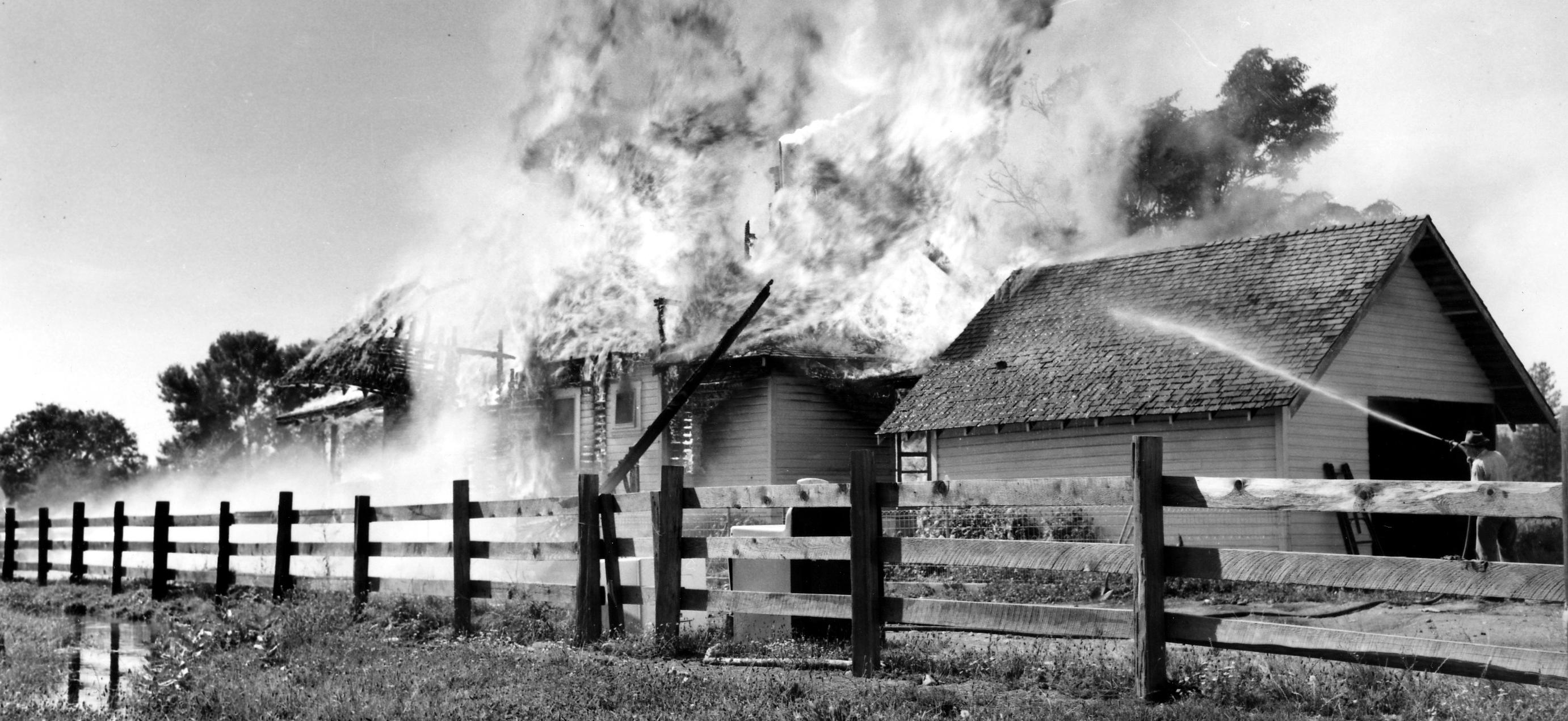
There used to be a watchtower that was taller than the other buildings, where a watchman kept a lookout all the time. As soon as he saw smoke or fire, he would sound the alarm. The townspeople would then form a human chain between the fire and the nearest well and pass on to each other pails of water with which to put out the fire.
Once, it happened that a lad from a small village came to town for the first time. He stopped at an inn on the outskirts of the town. Suddenly he heard the sound of a bugle. He asked the innkeeper what it meant.
By Rabbi Dr. Nissan Mindel
“Whenever we have a fire,” the innkeeper explained to the lad, “we sound the bugle, and the fire is quickly put out.”
“How wonderful!” thought the village lad. “What a surprise and sensation I will bring to my village!”
Thereupon, the village lad went and bought himself a bugle. When he returned to his village, he was full of excitement. He called all the villagers together. “Listen, good people,” he exclaimed. “No need to be afraid of fire anymore. Just watch me, and see how quickly I will put out a fire!”
Saying this, he ran to the nearest hut and set fire to its straw roof. The fire began to spread very quickly.
“Don’t be alarmed!” cried the lad. “Now watch me.”
The lad began to blow the bugle with all his might, interrupting it only to catch
his breath and to say, “Wait, this will put out the fire in no time!” But the fire did not seem to care much for the music, and merely hopped from one roof to another until the entire village was in flames.
The villagers now began to scold and curse the lad. “You fool,” they cried. “Did you think that the mere blowing of the trumpet would put the fire out? It is only the call of an alarm to wake up the people if they are asleep or to break them away from their business and work and send them to the well to draw water and put out the fire!” *
We are reminded of this story when we think of the shofar that is sounded throughout the month of Elul and many times on Rosh Hashanah. While sounding the shofar has intrinsic value as one of G‑d’s commandments, there is another element to the mitzvah.
Some people think, like that village lad, that the sound of the shofar itself will do everything for them. They believe that they may continue to “sleep” or go about their business, there being no need to change their way of life and daily conduct; the shofar sounded in the synagogue will surely bring them a happy new year.
But, like the bugle in the story, the shofar is the sound of an “alarm.” It has a message: “Wake up, you sleepers, think about your ways, return to G‑d, put out the ‘fire’ that is threatening to destroy your Jewish homes. Go to the well, the well of living waters, the Torah, and mitzvot. Hurry, before it is too late!”
That is why, immediately after the shofar is sounded, we exclaim (Psalms 89:16): “Happy are the people who understand the meaning of the sound of the shofar; they walk in Your light, O G‑d.
| August 2023 | Keeping Jewish
12
ELUL
Photo: U.S. Forest Service- Pacific Northwest Region
A parable about the deeper message of the shofar’s sound
J. Robert Oppenheimer: Father of the atomic bomb
By Seymour Brody
Julius Robert Oppenheimer was appointed director of the central laboratory for bomb design and development in Los Alamos, New Mexico, in May 1942, by General Leslie R. Groves, head of the Army Engineers.
Oppenheimer recruited a highly qualified staff of scientists by informing them of the German attempt to create an atomic bomb and expounding upon the peacetime uses of nuclear energy. His ability to mix with the scientists for open discussions, on-the-spot directions, and applying his knowledge to new situations and theories were components of his leadership ability.
When the Allies succeeded in removing the threat of a German atomic bomb through their military victories in 1944, Oppenheimer focused on making the atomic bomb as part of the Manhattan Project to help bring a quick end to the fighting in the Pacific. He also felt that knowledge of the possible devastation from the bomb would force nations to work for peace in the world.
When the atomic bomb was finally used on the Japanese cities of Hiroshima and Nagasaki in 1945, Oppenheimer was exhausted and deeply troubled. He resigned as director of the Los Alamos project. He accepted a professorship at CalTech and then, in 1946, went to the University of California at Berkeley. He found teaching challenging as he was constantly called to Washington for consultation.
He left Berkeley to become the director of the Institute for Advanced Study in Princeton, NJ. Fellow Jewish physicist Albert Einstein was already a nonteaching faculty member there. The institute attracted many postdoctoral fellows and succeeded prewar Copenhagen as the world center of theoretical physics.
Oppenheimer’s prestige grew, and he became the spokesman for those who believed that the atomic age demanded a broader understanding of science and technology. He wrote many articles and gave many lectures on this subject. He was primarily responsible for the tone and content of the Acheson - Lilienthal plan, which was presented to the United Nations as a basis for negotiation for atomic energy control. Together with Soviet scientists, he concluded that international control was technically realistic and achievable. Oppenheimer served on many government committees that were related to atomic energy.

When Oppenheimer’s General Advisory Committee appointment expired in July 1952, he remained a consultant. His clearance was taken away as part of the anti-Communist hunt of Senator Joseph McCarthy. Oppenheimer requested and received a secret hearing which lasted from April 12 to May 6, 1954, during which distinguished scientists and public servants testified on his behalf. The hearing concluded that Oppenheimer’s loyalty was not in question but that it would be unwise to trust him with official secrets.
Oppenheimer remained director of the Institute for Advanced Study in Princeton until he resigned in 1966. He died in 1967. His development of the A-bomb and his writings and lectures on atomic energy are a testimonial to his intellectual greatness and his contributions to the American war effort. He was notable as a great Jewish scientist and an outstanding physicist of the 20th century.
- Originally published in Jewish Heroes & Heroines of America: 150 True Stories of American Jewish Heroism (Frederick Fell Publishers, Inc.)
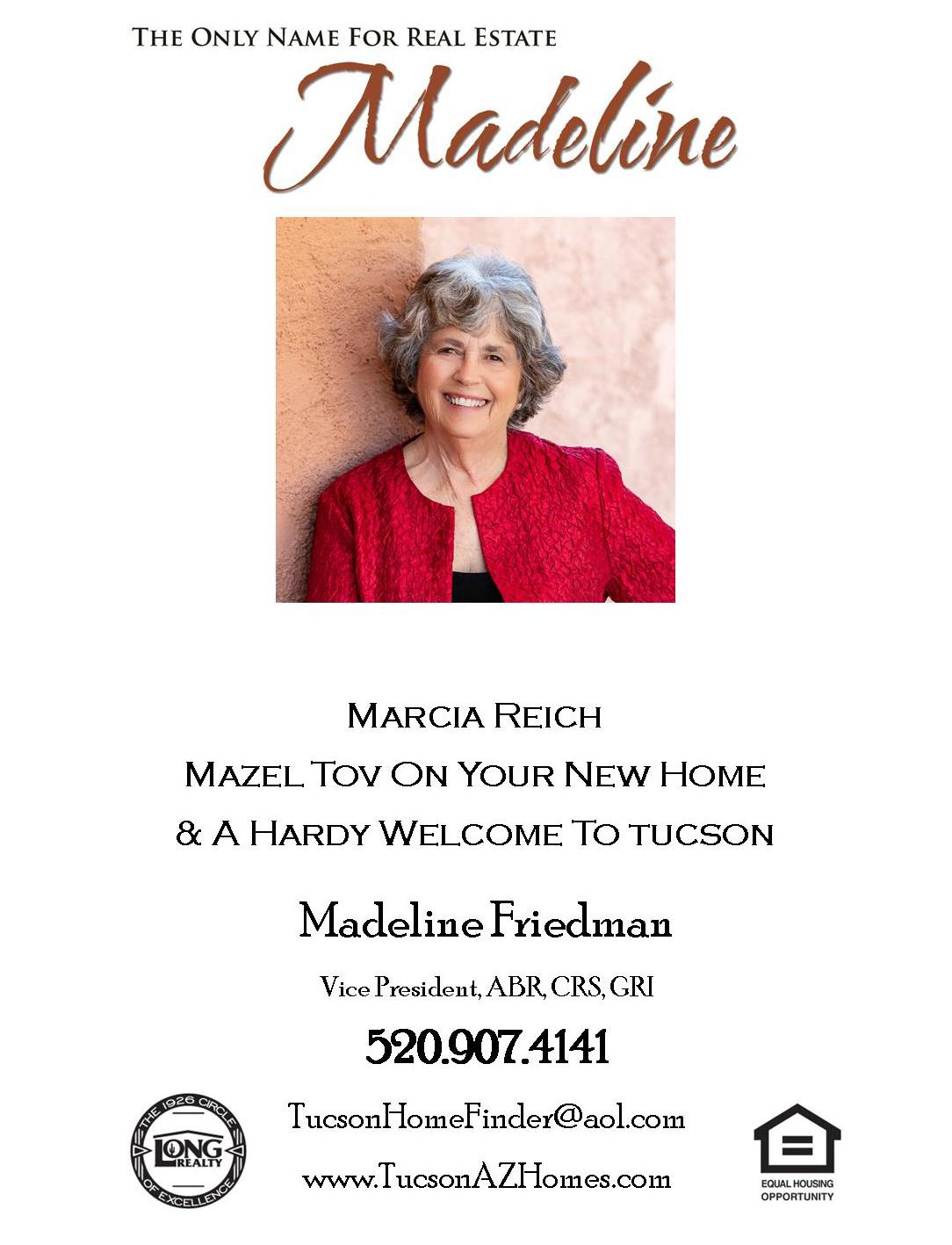
Keeping Jewish | August 2023 |
13
Illustration by Art Seiden
HISTORY
I’m a high school teacher in real life. I constantly find myself arguing with students who are sure they won’t use any knowledge at all in real life. However, they don’t know what they want to do in real life, but apparently, they do not want anyone to teach them anything until they decide so they can make their decisions based on no information.
But here’s the secret of school that no one tells them (Don’t worry, they don’t read anything I write anyway): Most of what you learn in school isn’t even in the textbooks. The book knowledge is just a framework to learn these other skills that you’ll need for life, no matter what you do for a living:
1. How to write quickly while someone else is talking and not miss any of what was said because you were writing.
Actually, the teacher isn’t even aware that people are writing down what he’s saying. He can’t be. If he let himself be aware of it, he’d be very uncomfortable. Imagine if every time you said something, everyone around you wrote it down.
“Did you write that down? Are you writing down what I’m asking you right now?! Stop writing! This isn’t on the test!”
School’s secret curriculum
Life skills you learn in class without knowing it
By Mordechai Schmutter
2.
There’s your wife, your kids, your boss, and your kids’ school (you thought you got out of school years ago, but it’s still there, ruling your life), and they’re all making demands on your time, and no one seems to be aware that the other one exists. Time management is a skill that builds slowly as you advance through the grades, which is why you are saddled with more and more teachers every year. And all of them are coordinating their schedules to give finals on the same day.
3. How to make a random object such as a book last an entire year in relatively good condition.
This is good practice for when you have to borrow something from, say, your neighbors, and they expect to get it back in the same condition they gave it to you, and also in the same year.
4. How to memorize what someone said, even if it’s wrong.
My wife must have excelled in this in school. She can remember things I said that were wrong for years after I said it, pulling them up last minute. But that
is not my point. My point is that even if you believe the teacher is wrong about something, the only way to get it right on the test is to give his wrong answer. So it’s not about knowing the right answer; it’s about filling in papers with things that don’t necessarily make sense to you in the hopes that they’ll make sense to the person reading it. Like doing taxes...
5. How to ration a limited amount of food over the course of a day.
Your parents give you two snacks. Or three snacks. Or ten. It doesn’t really matter because if they are good snacks, you’ll have finished them before you get to school, and if they’re not good, they’re going to sit at the bottom of your knapsack until Passover. So you have to learn to make your food last until you get home and also keep it away from whatever’s growing at the bottom of your knapsack. As an adult, you need the same skill set for work.
6. How to be on time for things and the consequences of not being on time for things.
Arguably, if you’re too young to drive, it is more difficult to nail down being on time. That’s why we learn to sneak in during recess.
7. How to make it seem like you’re knowledgeable about something when you really aren’t.
How could a student argue with a teacher about whether he needs to learn a subject when the teacher knows everything there is to know about the subject and the student hasn’t listened to a word all year? You’d think he’d be at a disadvantage here. But the key is to learn to sell it. In school, you learn to sharpen the skill of pretending you know things. Time to shine!
So that’s what you’re doing in school. Yes, there are official class subjects, but that’s not what you’re learning for life. You’re going to forget most of that anyway, hopefully not before the test. The way you learn the actual subjects is when you’re an adult helping your kids with their homework, and it comes back to you in vague pieces. It turns out that you don’t really retain things until the second time you encounter them. That’s what school is good for – being that first time.
So as far as book knowledge, parents gain more from school than kids do, which is only fair because we’re the ones paying for it.
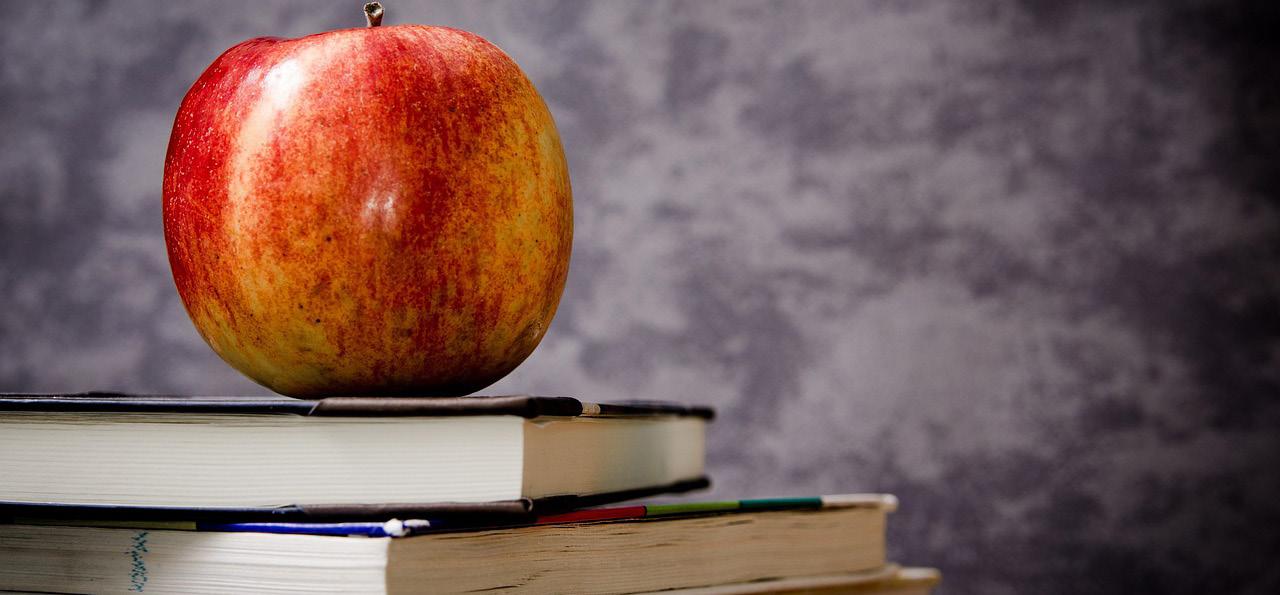
| August 2023 | Keeping Jewish
How to manage your time when you’re not in charge of it.
14 HUMOR
Photo by Michal Jarmoluk/Pixabay
Take the Month of Elul Quiz
By Menachem Posner
1. What is the mazal (zodiac) of the month of Elul?
a. Betulah (maiden)
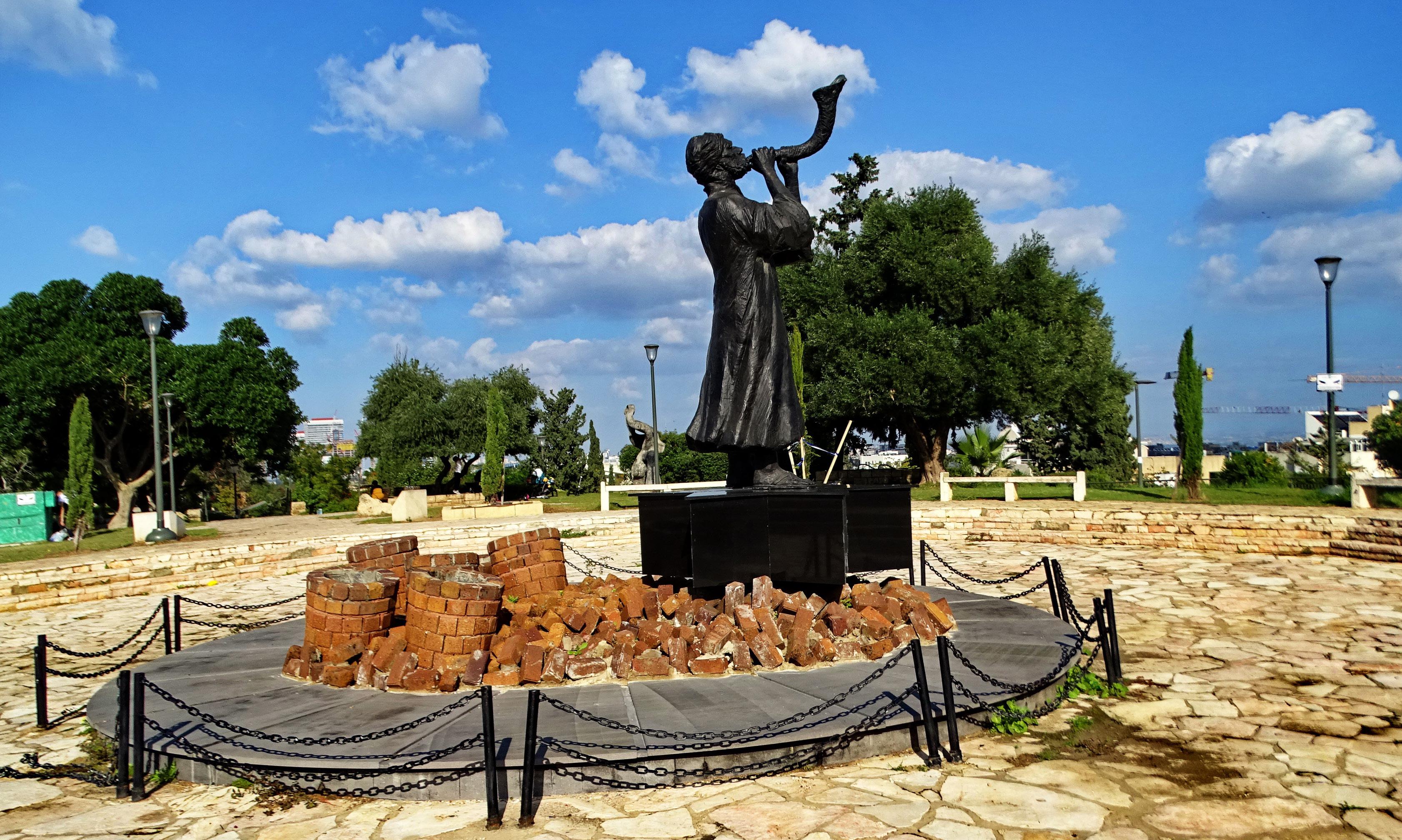
b. Moznaim (scales)
c. Sefer (scroll)
2. Elul is the final month before:
a. Property taxes are due in the Holy Land
b. The High Holidays: Rosh Hashanah and Yom Kippur
c. Kosher certificates are due for renewal
3. On which day in Elul is the shofar never sounded (besides for Shabbat)?
a. On the first day of the month
b. On the final day of the month
c. On the fifteenth of the month, 30 days before Sukkot
4. Elul is an acronym for:
a. Ayin laHashem v’ayin laadam (“an eye to G-d and an eye to man”)
b. Od lo avdanu lemoreinu (“we have not yet served our master”)
c. Ani ledodi vedodi li (“I am to my beloved, and my beloved is to me”)
5. What is the traditional wish for this time of year?
a. L’Shalom: “For peace”
b. Ketiva vachatima tova: “Be written and sealed for good”
c. Gutten kvittel: “Good petition”
6. Which Psalm do we say twice daily during this month?
a. Chapter 24, the Lord is my shepherd
b. Chapter 27, LeDavid Hashem Ori
c. Chapter 90, Tefilah LeMoshe
7. During this month, G-d is compared to:
a. A husband weaving a wedding cape for his beloved wife
b. A parent who searches the desert for his missing children
c. A king in the field greeting his subjects
8. During Elul, it is customary to:
a. Bake honeycake
b. Say L’chaim in preparation for Simchat Torah
c. Check tefillin and mezuzot
9. What do Sephardim say early in the morning every day of Elul?
a. Chad Gadya
b. Selichot
c. Pizmon Hashanah
10. Which two great Jewish leaders were born on the 18th (Chai) of Elul?
a. Shifra and Puah
b. The Baal Shem Tov and the Alter Rebbe
c. Moses and Aaron
Keeping Jewish | August 2023 |
15 FUN PAGE
Answers: 1-a, 2-b, 3-b, 4-c, 5-b, 6-b, 7-c, 8-c, 9-b, 10-b.
“The Strength of Hope”
statue by Holocaust survivor Ruth Steif Rogier in Ramat Gan, Israel *
Photo: Israel Zeller
THURSDAY, SEPTEMBER 14 7:00-9:00 PM
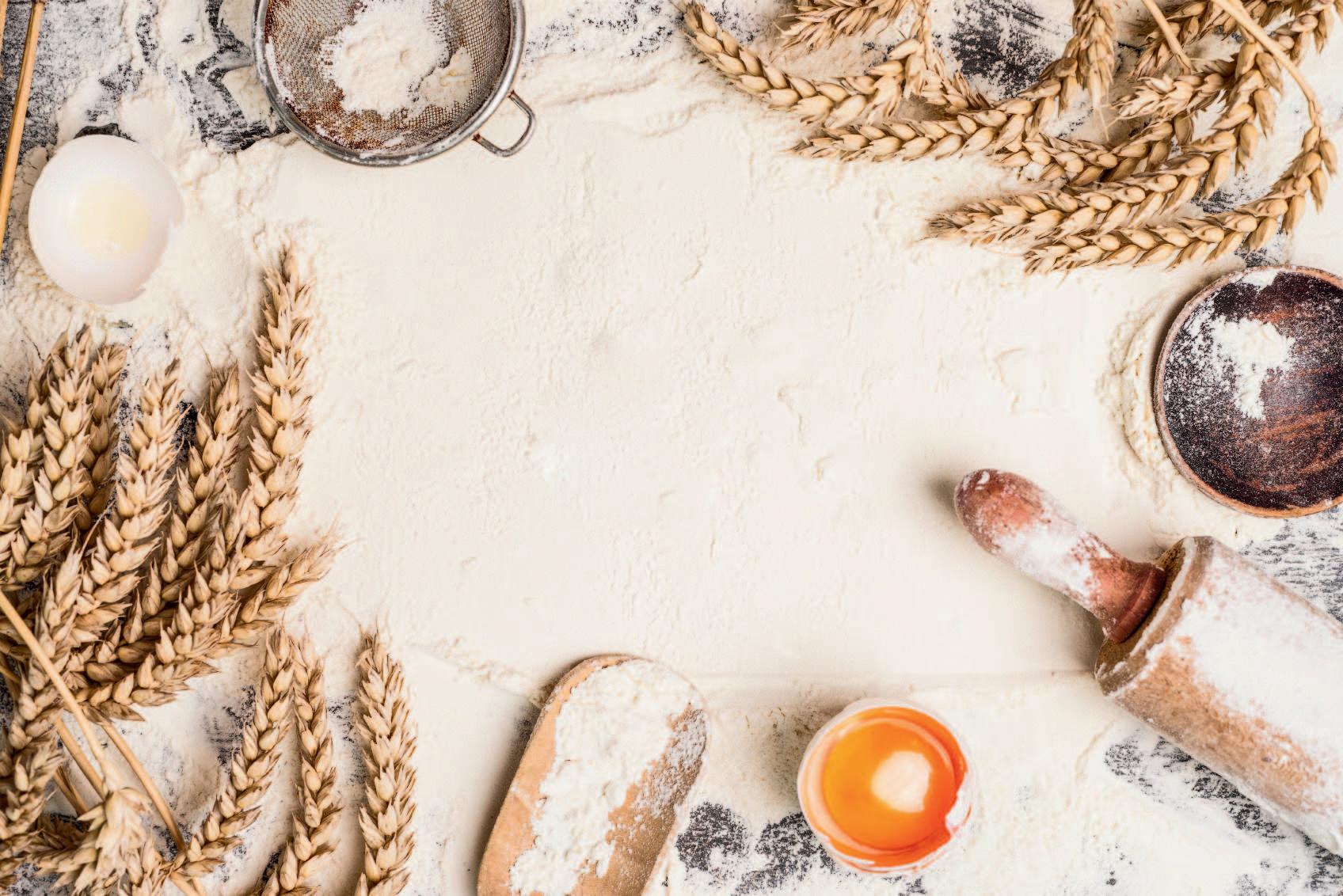
Tucson JCC - 3800 E River Rd

A special event for women and girls welcoming the new Jewish year Register at www.MegaChallahTucson.com

BH
presents









 By Sruly Meyer
By Sruly Meyer






















